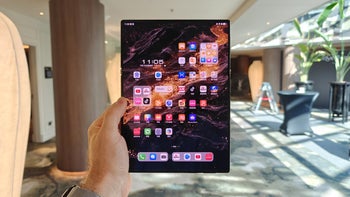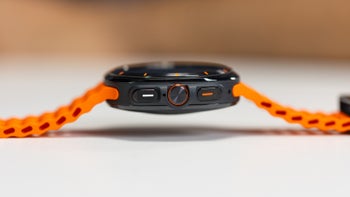Cobra iRadar Review

Introduction :
For the longest time, we haven’t seen a radical shift in radar detector technology, but Cobra is planning on stirring things up with its aptly name iRadar detector. Naturally, radar detectors are primarily regarded as standalone devices that provide useful alerts when various detection systems are located. However, Cobra iRadar is not your average middle of the road offering – rather, it’s being touted as the world’s most advanced, smart detection system available today. Priced at $129.99 on the average through a variety of retailers, is this smartphone companion capable of making you ditch your old and trusty radar detector? Let’s take a peek shall we? Included with the box is the car charger and windshield suction attachment.
Design:
Not deviating dramatically in form to other radar detectors out there, the iRadar implements a more minimalistic design that most others with its completely piano black plastic exterior. Of course, it’s able to exude an alluring presence with its polished appearance, but it’s easily dirtied up since it’s a magnet for fingerprints. All in all, it’s solidly built for the most part – though, it’s rather hollow and lightweight.
Being the most prominent thing found on the iRadar, the dedicated mute button is placed conveniently towards the bottom area of its main façade. Not too far from it, we also find the radar detector’s narrow looking speaker grill, which is used primarily to emit alerts and notifications.
Although it’s not visible when it’s powered on, there’s actually a single LED built into the bottom edge of the iRadar that turns red when it’s not paired, or blue when it is.
Lastly, there’s a small slot found on its backside that’s used to connect it with the windshield suction cup attachment. Furthermore, this area is completely clean of anything else because it houses most of the iRadar’s sensors that are used to detect various radars.
For the longest time, we haven’t seen a radical shift in radar detector technology, but Cobra is planning on stirring things up with its aptly name iRadar detector. Naturally, radar detectors are primarily regarded as standalone devices that provide useful alerts when various detection systems are located. However, Cobra iRadar is not your average middle of the road offering – rather, it’s being touted as the world’s most advanced, smart detection system available today. Priced at $129.99 on the average through a variety of retailers, is this smartphone companion capable of making you ditch your old and trusty radar detector? Let’s take a peek shall we? Included with the box is the car charger and windshield suction attachment.
Not deviating dramatically in form to other radar detectors out there, the iRadar implements a more minimalistic design that most others with its completely piano black plastic exterior. Of course, it’s able to exude an alluring presence with its polished appearance, but it’s easily dirtied up since it’s a magnet for fingerprints. All in all, it’s solidly built for the most part – though, it’s rather hollow and lightweight.
Using the dial found on the left edge of the iRadar, which also doubles as the volume control as well, we’re able to turn it on since it’s accompanied by a noticeable click feel to indicate that it’s accepting power. Also, we find its charging port sitting close-by.
Although it’s not visible when it’s powered on, there’s actually a single LED built into the bottom edge of the iRadar that turns red when it’s not paired, or blue when it is.
Lastly, there’s a small slot found on its backside that’s used to connect it with the windshield suction cup attachment. Furthermore, this area is completely clean of anything else because it houses most of the iRadar’s sensors that are used to detect various radars.
Using it and Performance:
Using the iRadar as a standalone radar detector, we’re actually amazed to find it performing exceptionally well in digging out various radar systems. Even though we don’t find any visual alerts on the actual unit itself, the iRadar emits variable tones to indicate the presence and distance of a specific radar. Additionally, a voice will announce what kind of radar band it’s picking up – like X, K, Ka, and VG-2.
However, the iRadar shows its true potential when it’s paired with a compatible iOS or Android device (iPhone 4 in our case), and the free Cobra app. Running the app on an iPhone 4, the interface is mainly straightforward with its finger friendly sized icons – and we like that it’s not too complex to operate. Basically, the iRadar sends alerts to the iPhone 4 to visually notify you what it’s picking up, records GPS markings of each alert, and utilizes the GPS location to notify you of any speed traps or red light cameras.
Getting into Dashboard mode of the app, it’s considered to be the center of operation for the entire iRadar system. Specifically, it displays items like our current speed, car battery voltage, and direction that we’re heading. Obviously, when the iRadar detects something, it’ll display what it is specifically, and from there, we have the option of choosing whether or not it’s actually a real or false alert. Needless to say, this function proves to be valuable seeing that it records the location of the alert – so that we’re aware of any common false alert areas. Additionally, you can also manually mark a specific location to the handset if it appears to be an area of high enforcement.
Using the iRadar over the course of a week, we’re actually impressed by its usefulness in keeping us aware of our surroundings. Not only are we alerted to various threats, but it’s nice to see that Cobra’s database is extensively updated to give us the most accurate alerts for speed traps and red light cameras. However, if there’s one thing we’d love to see integrated, it has to be another alert for speed limits – like being alerted by the app if we’re speeding above the limit.
Conclusion:
If you haven’t shopped around for a radar detector of late, you’ll naturally find some basic ones priced at under $100, but for ones that incorporate more location based features, you can expect them to be placed above the $200 mark. Sporting a reasonable $129.99 price tag on the average, Cobra’s iRadar is indeed a venerable companion to the iPhone – mainly because of its intricate functionality in sniffing out and saving alerts. At the same time, we’re better able to drive normally without being distracted because the iRadar is able to announce alerts and emit variable tones to indicate the presence of a particular alert. Honestly, it’s not all about being one step ahead of authorities, but rather, the iRadar allows us to be better informed of our surroundings.
Cobra iRadar Video Review:
Using the iRadar as a standalone radar detector, we’re actually amazed to find it performing exceptionally well in digging out various radar systems. Even though we don’t find any visual alerts on the actual unit itself, the iRadar emits variable tones to indicate the presence and distance of a specific radar. Additionally, a voice will announce what kind of radar band it’s picking up – like X, K, Ka, and VG-2.
However, the iRadar shows its true potential when it’s paired with a compatible iOS or Android device (iPhone 4 in our case), and the free Cobra app. Running the app on an iPhone 4, the interface is mainly straightforward with its finger friendly sized icons – and we like that it’s not too complex to operate. Basically, the iRadar sends alerts to the iPhone 4 to visually notify you what it’s picking up, records GPS markings of each alert, and utilizes the GPS location to notify you of any speed traps or red light cameras.
Using the iRadar over the course of a week, we’re actually impressed by its usefulness in keeping us aware of our surroundings. Not only are we alerted to various threats, but it’s nice to see that Cobra’s database is extensively updated to give us the most accurate alerts for speed traps and red light cameras. However, if there’s one thing we’d love to see integrated, it has to be another alert for speed limits – like being alerted by the app if we’re speeding above the limit.
Conclusion:
If you haven’t shopped around for a radar detector of late, you’ll naturally find some basic ones priced at under $100, but for ones that incorporate more location based features, you can expect them to be placed above the $200 mark. Sporting a reasonable $129.99 price tag on the average, Cobra’s iRadar is indeed a venerable companion to the iPhone – mainly because of its intricate functionality in sniffing out and saving alerts. At the same time, we’re better able to drive normally without being distracted because the iRadar is able to announce alerts and emit variable tones to indicate the presence of a particular alert. Honestly, it’s not all about being one step ahead of authorities, but rather, the iRadar allows us to be better informed of our surroundings.
Cobra iRadar Video Review:












Things that are NOT allowed: